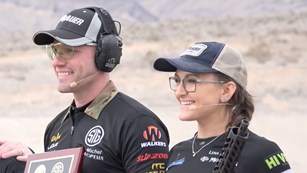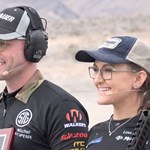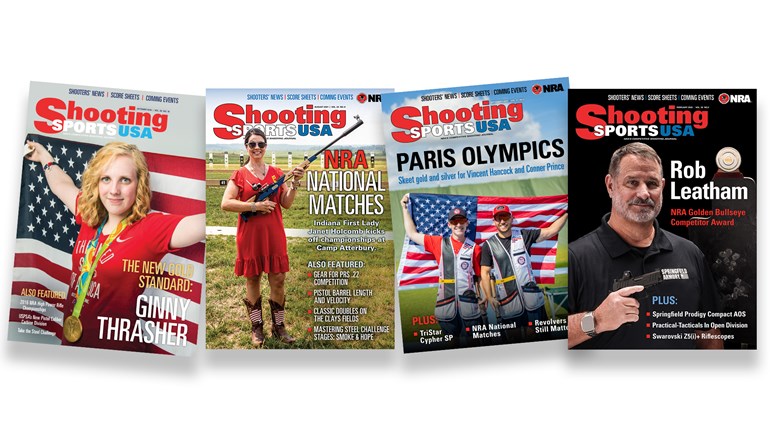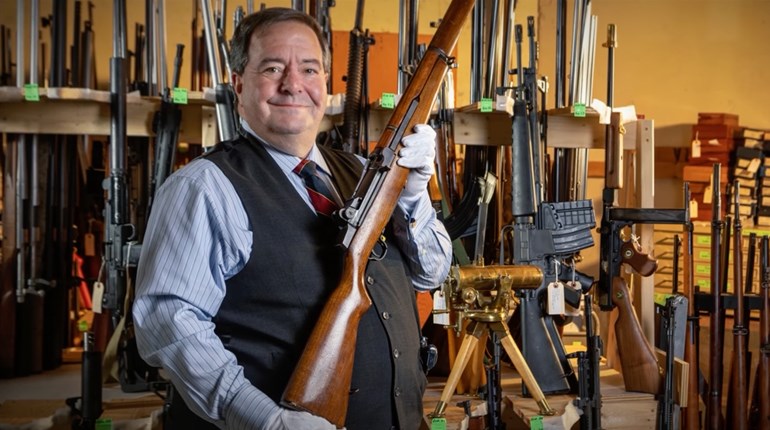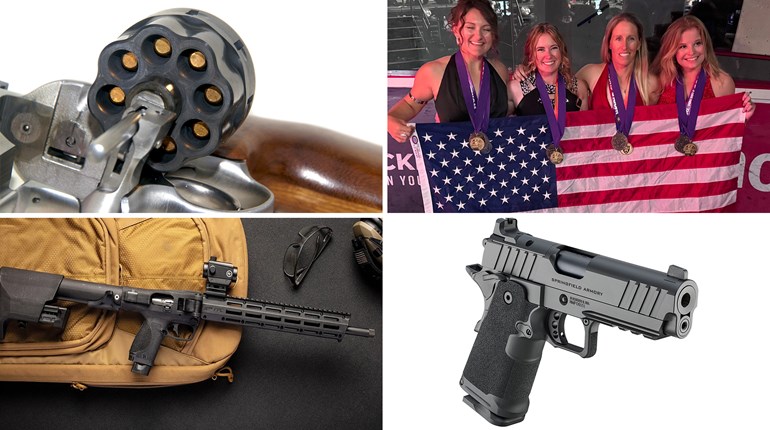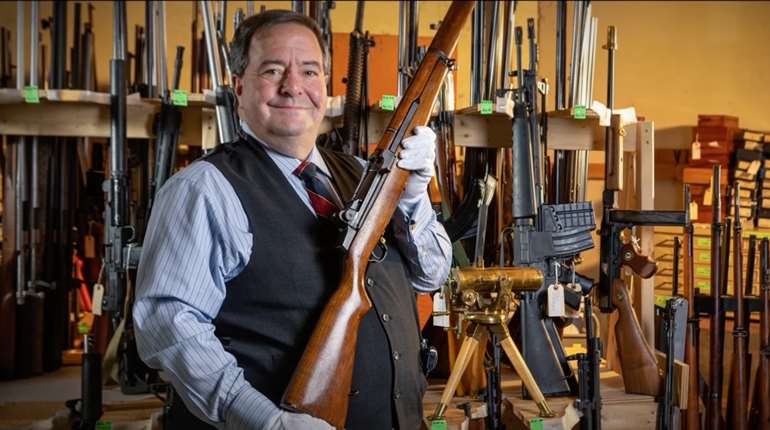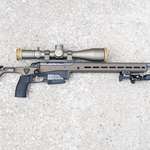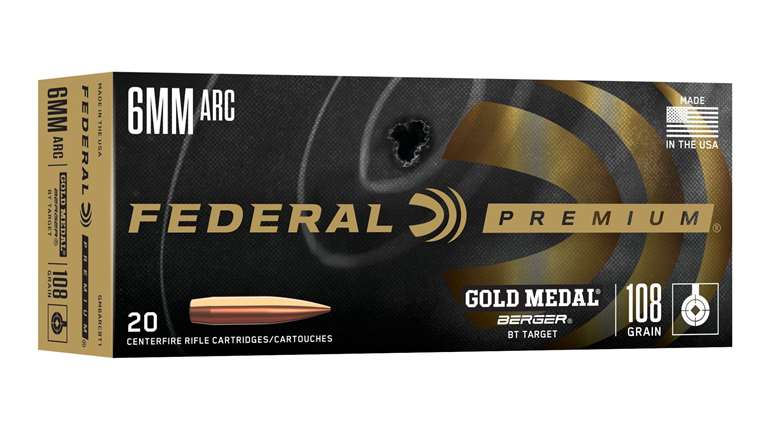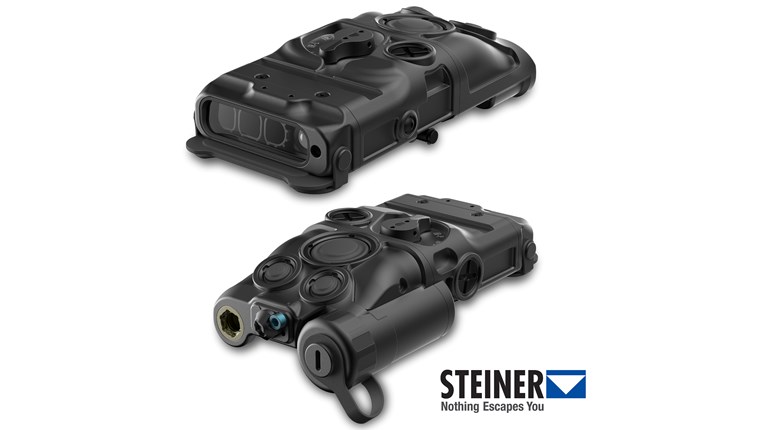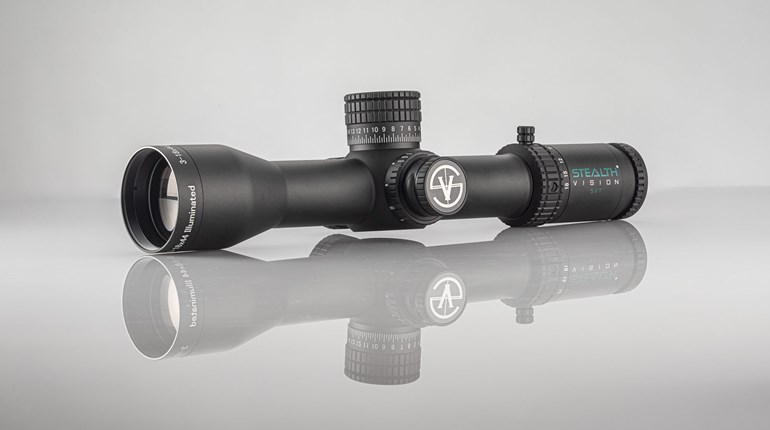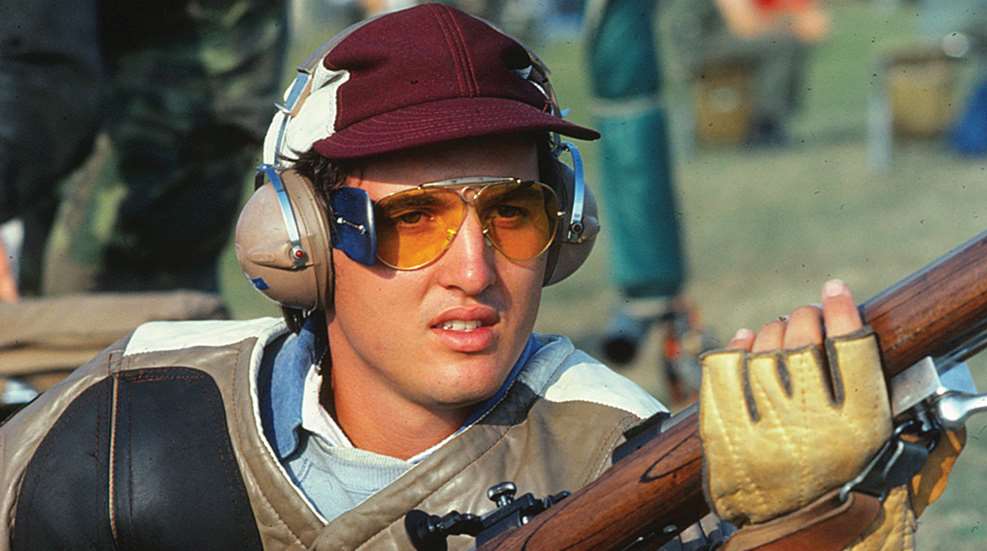
Editor’s note: This final installment of a three-part series was originally published in the March 2000 issue of Shooting Sports USA. Read Part 1 and Part 2.
This is the third and final installment of our top 50 picks of the greatest competitors of the 20th century. We hope you’ve found our picks to be as worthwhile of their selection as we did. We also hope that the accomplishments these shooters have made, as well as the fine examples of sportsmanship they’ve set, will give others the incentive to mark their own places in the future of our shooting sports, and carry on our fine traditions.
Lanny Bassham
Two Americans standing side by side in Olympic glory: that was the image Lanny Bassham left to future generations of shooters. At the 1976 Olympic Games in Montreal, a preliminary posting of the scores in the 3x40 free rifle event had his teammate Margaret Murdock finishing a single point ahead of him. A review of the targets showed that the two had actually finished with the same score. Bassham was awarded he gold medal, because his final ten shots were higher than Murdock’s. At the award’s ceremony, rather than have Murdock stand below him in the silver medalist spot, Bassham pulled her up to the stand with him.
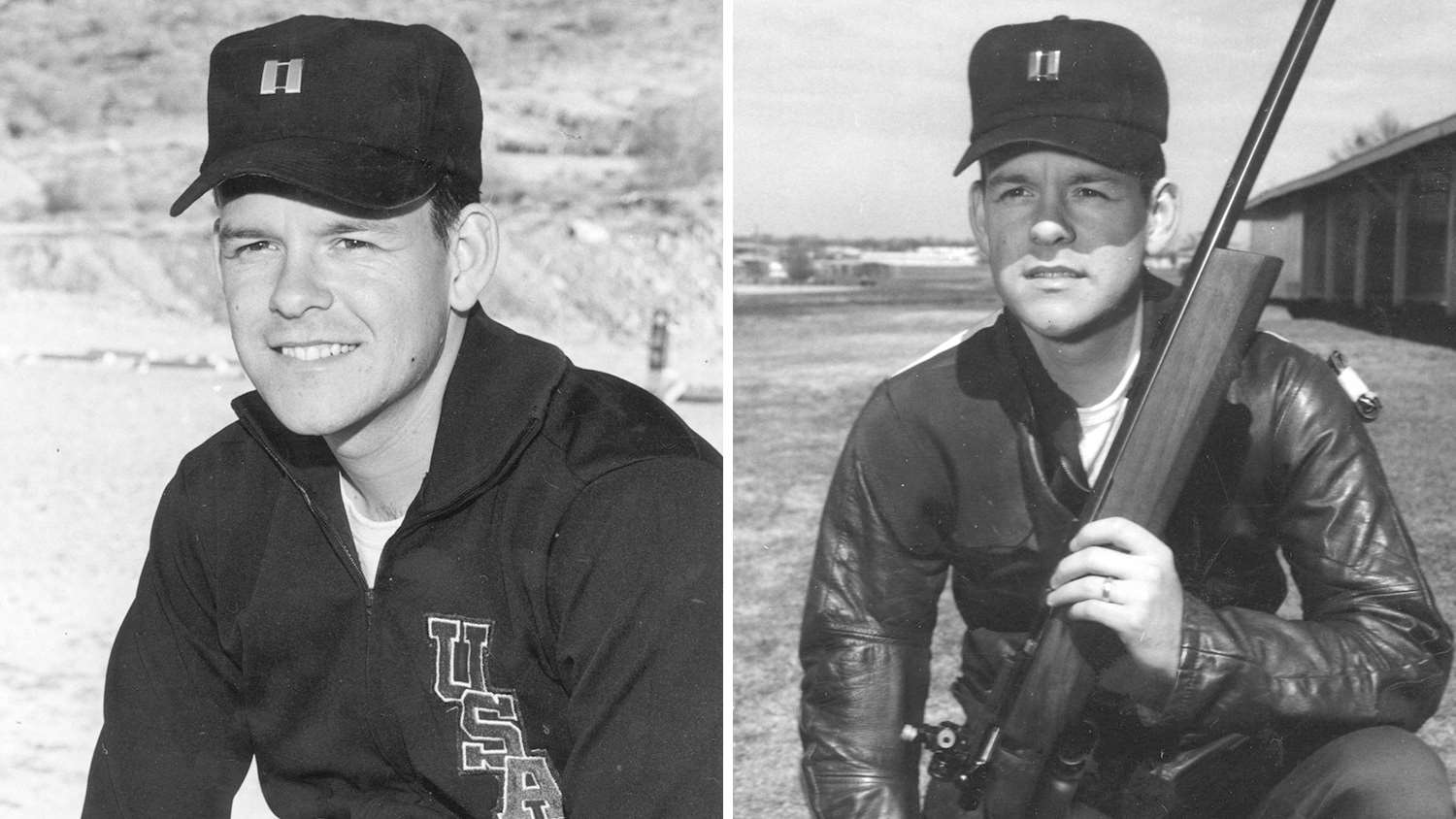
At the 1974 World Championships, Bassham was a medal juggernaut. He collected four golds, one each in 50-meter standing free rifle, 300-meter 3x40, 400-meter prone free rifle, and 300-meter standing free rifle. He also collected a silver medal in 10-meter air rifle and a bronze in 50-meter 3x40 free rifle.
Two years after his Olympic gold medal, Bassham again won a gold medal in 50-meter 3x40 free rifle at the World Shooting Championships. To go with his gold, Bassham picked up a pair of bronze medals, one in 50-meter standing free rifle and the other in the 50-meter prone English match. Topping off his individual medals, Basham has been a member of six, world record-setting teams.
Huelet L. Benner
Better known to his fellow shooters simply as Joe, Huelet Benner made a solid impression on the bullseye world when he unseated Harry Reeves as the National Pistol Champion at Camp Perry in 1947. A Staff Sergeant with the U.S. Army at the time, Benner would become Reeves’ top rival for the next decade. In particular, Benner would earn the national title in 1949, 1951, 1955, 1956 and 1959. National individual phase wins were also earned by Benner on a frequent basis. He claimed the .22 LR caliber title in 1951 and 1957, the center fire championship in 1949, 1951, and 1954, and the .45 caliber crown, first in 1951 and then in three back to back wins from 1954 through 1956.
Benner made large marks in international competitions as well as on the home front. At the 1948 Olympics, the pistol competitions were fired at the Bisley Range outside of London. There, Benner shot the highest score ever recorded by an American in the main pistol event. His fine showing placed him fourth overall, remarkable in an era when American pistol shooters were outclassed by the semi-automatic wielding Europeans.
The rivalry between Benner and Reeves would also continue at the world level, with both switching places as the lead dog on many ISU and Pan American teams from the late 1940s through the 1950s. The pitting of Benner’s top notch talents against those of perennial winner Reeves, produces many a tight race, and made bullseye one of the most exciting contests of their generation.
Carl Bernosky
As the Pittsburgh Steelers dominated pro football in the late 1970s, Pennsylvania’s Carl Bernosky dominated high power shooting. Bernosky (that's him in the photo at the top of this article) is the only high power shooter to have won four national high power championships in a row. He has won a total of five national titles. Along with Middleton Tompkins, Bernosky is also the only high power competitor to win a national championship in three separate decades: The 1970s, 1980s and 1990s (Tompkins won in the 1950s, 1960 and 1980s). Update: Bernosky won the NRA High Power Rifle Championships in 2011 and 2012, adding another decade to his list.
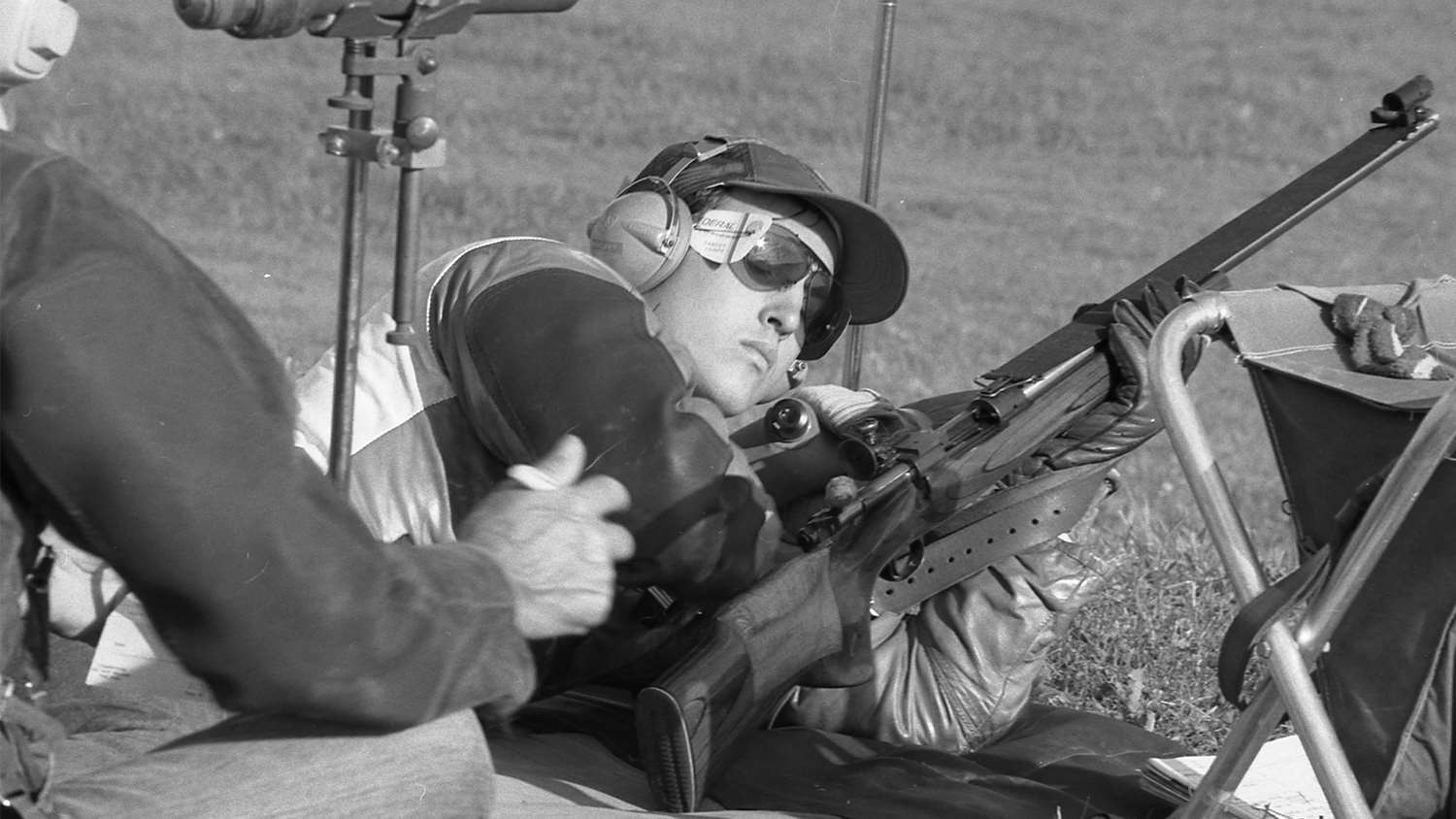
Bernosky was just 20-years-old in 1977 when he won his first high power championship at Camp Perry, and he repeated as high power champion in 1978. This second straight victory made him one of only five shooters at that time to repeat the title. His third trip to Camp Perry’s highest awards podium in 1979 made him the first person to win three high power championships in a row.
The year 1980 saw a new decade, but the same high power champion, though Bernosky had to come from behind to win his fourth straight title. It looked like he was out of the running at the end of the first day’s matches. By the end of the third match day, however, Bernosky had won the Marine Corps and Air Force Cup Match courses and the Nevada Trophy. He finished the matches with an aggregate score of 2374-120X for the top spot.
Bernosky was beaten out of a fifth title in 1981 by CWO David I. Boyd, II, of the U.S. Marine Corps, but he did earn the Match Rifle Championship. More than a decade after his last national championship, Bernosky won a fifth title in 1972.
Not content with just high power, Bernosky has also competed in smallbore and action pistol. In 1985, he was the Smallbore Three-Position Champion. At the 1999 NRA Bianchi Cup National Action Shooting Championships, he was the high scoring expert with an aggregate score of 1918-162X.
Lucile Chambliss
Lucile Chambliss holds the distinction of being the first woman ever elected to the Mayleigh Cup pistol team. Chambliss obtained that honor in 1953 and then went on to win the Women’s National Championship in 1954, beating Gertrude Backstrom by one point. That year she also won the Florida Open Pistol Championship in her home state, the only woman in Florida’s history to do so. These accomplishments were just the beginning of a highly successful, 35-year career in bullseye, combat and international pistol.
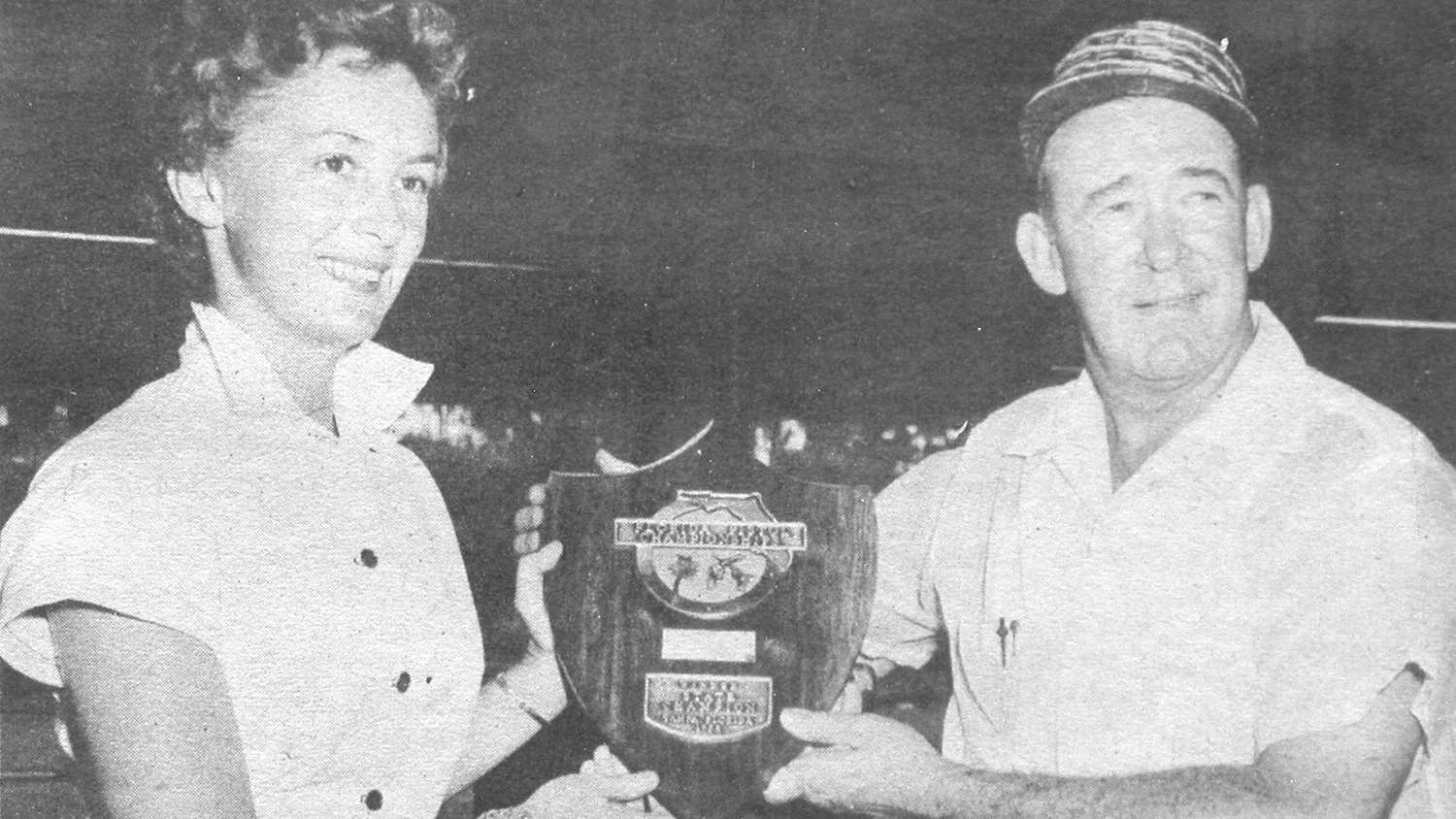
Chambliss would repeat her national women’s title three more times in 1960, 1961, and 1964. In 1962 she also qualified for the U.S. International Women’s Pistol Team with a record score that stood for eight years. In the late 1960s, Chambliss turned to combat pistol, a sport not often tested by women at the time. Adding mastery of this discipline to her marksmanship repertoire, she earned the National Women’s Combat Pistol Championship in 1966 and 1968. To this day, she remains the only woman in U.S. history to have won both bullseye and combat pistol national titles.
Chambliss’ dominance through the 1970s began with her earning a place on the 1970 U.S. International Shooting Team. That year she fired in the 40th World Shooting Championships as a member of the U.S. three-woman team. The team earned bronze in the Air Pistol Championships and won the ladies .22 match with a world record score, a first for a U.S. woman’s team, a feat that has not been repeated. Chambliss herself earned the second place score in the three-woman team event and the individual overall fifth place. Her outstanding shooting at the world event earned her the 139th U.S. International Distinguished Shooter’s Badge awarded by the U.S. government.
Chambliss returned to the fast pace of combat shooting in 1973 and proved she had not lost her touch while on the international bullseye circuit by winning another national women’s combat title. She earned the 48th Police Distinguished Badge and went on to serve the shooting community as a member of the NRA Board of Directors from 1978 to 1981. Chambliss has also served her Florida community as a law enforcement instructor.
Blanche Crossman
Blanche Crossman had so much talent spread over such a wide variety of activities that a woman of today would be hard-pressed to match half of what this lady did. This supposition stands all the more because Crossman displayed her abilities in 1919, a time when most women were content o be housewives and mothers.
Blanche Crossman was indeed a housewife and mother, and much admired by her generation for her homemaking skills. She was also a popular concert singer, and her concerts were broadcast on major Los Angeles radio stations. But Crossman was at heart an active outdoors woman, hunting everything from game birds to big horn sheep. She was also a dedicated target shooter, tackling competitive smallbore with grand results. Crossman was so proficient in the smallbore field that she shot her way onto the first American Dewar Team in 1919, thus becoming the first woman to compete in an international rifle event. In the “man’s world” of target competition during the early part of this century, it’s important to note that Crossman was actually welcomed by the men on the firing line. Her sportsmanship lead the way, but her decorum as a lady maintained their respect.
Twenty years after her appearance on that first Dewar Team, Crossman had added tournament shotgunning to her list of shooting accomplishments at the 1937 Women’s Skeet Championship in Detroit. The next year, Crossman’s shooting career come to an untimely halt as she died of injuries sustained in an auto accident coming home from a dove hunt.
Morris Fisher
Morris Fisher went from being a young Marine that didn’t qualify during basic training at Parris Island, to one of the premier rifle competitors of the 1920s.
In the 1920 and 1924 Olympics, Fisher won two individual gold medals and was a member of three, gold medal teams. Douglas C. McDougal, another great Marine Corps shooter and Fisher’s company commander, turned Fisher into a true rifleman. Fisher showed what a Marine could really do with a rifle at the 1920 Olympics. With his Springfield ’03, Fisher shot a score of 996 to help the U.S. win the 300-meter five-man team match. He was also a member of the winning five-man team in the 600-meter event. These were remarkable accomplishments as the team members fired without the aid of slings or scopes. Fisher would go on to be a firing member of the 1921 U.S. International team that overcame a 65-point lead by the Swiss to win the International Games in Lyon, France.
Fisher put himself through a grueling, year-long training program to prepare for the 1923 International Matches at Camp Perry, OH. The training paid off as his individual score of 1090 broke the world record by 12 points, earning him the title of World Rifle Champion. The European teams had not attended the 1923 matches at Camp Perry, and they let the Americans know that had they been there, the results would have been different. Fisher quickly put an end to that talk by repeating as the 1924 World Champion in Rheims, France.
Fisher would continue to compete throughout the rest of the 1920s, but he would never repeat the incredible stretch that he had from 1920-24. His last international match was in 1930.
Carlos N. Hathcock
Born into a dirt-poor, broken home in Arkansas, Carlos Hathcock joined the Marine Corps at 17 and quickly realized he’d found his place in the world. He qualified as an expert rifleman in boot camp and began to win competitive service rifle competitions. At the 1965 National Matches at Camp Perry he won the Wimbledon Cup, the premier American 1000-yard shooting championship.
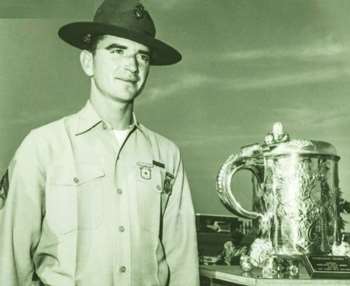
Shortly after that, Hathcock was stationed in Vietnam and established extensive sniper operations. A former commanding officer built a new unit around Hathock’s rifle shooting abilities. Hathcock gave himself to the war with such fury that he took no liberty, no days off, and in face, was eventually restricted to quarters to prevent him from going on further missions.
His biography, Marine Sniper, by Charles Henderson, was published in 1985. It sold more than half a million copies. Portions of his story have also been dramatized in movies and TV productions, as well as numerous newspapers and national magazines. His accomplishments are revered in the world of target shooters, hunters, and police and military shooters. Among these marksmen he is a symbol of perseverance, bravery and true American patriotism.
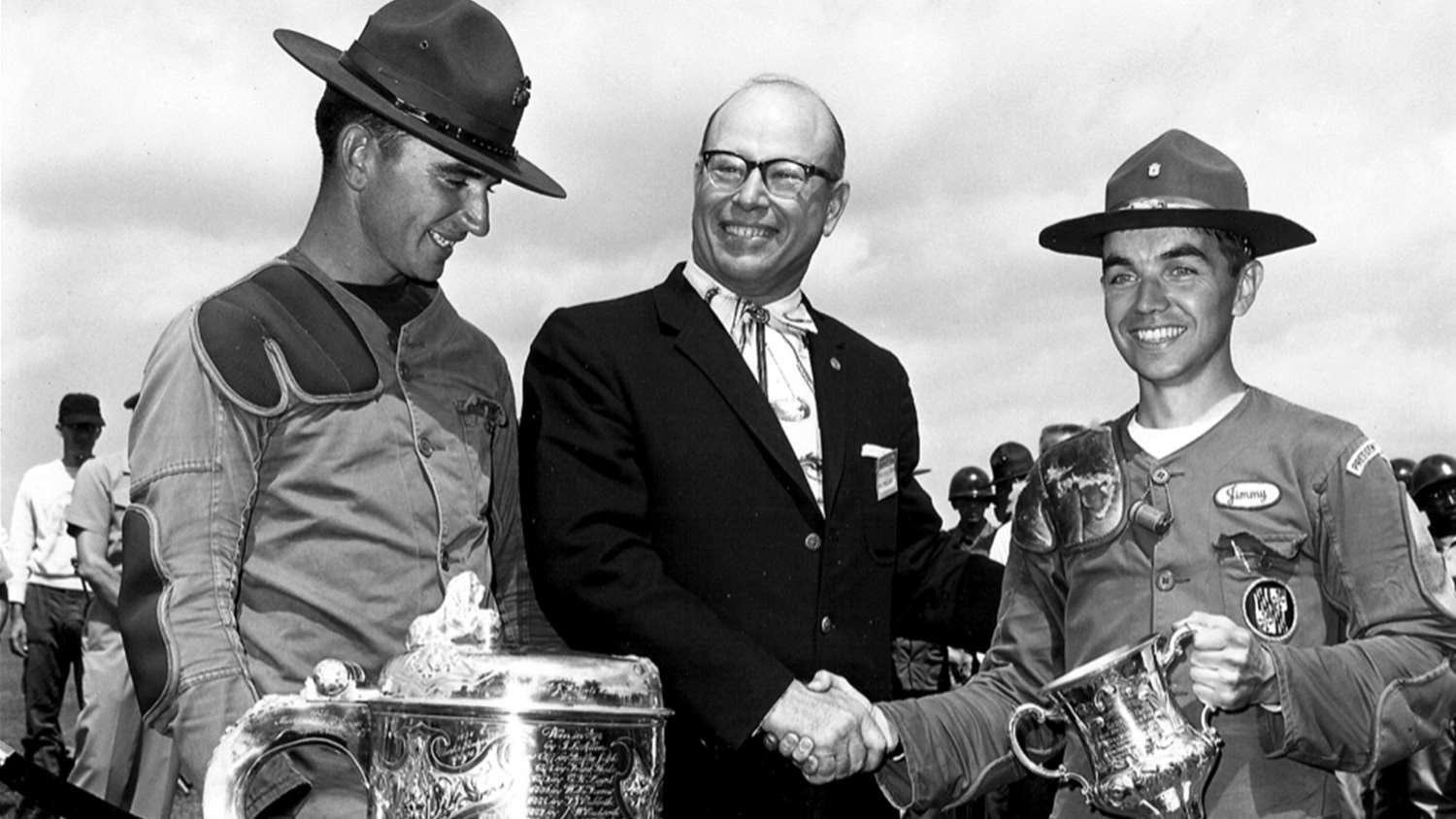
Hathcock died of complications from a long-term illness in 1999. His son Carlos Hathcock, III, has carried on his Marine Corps marksmanship heritage by becoming a member of the Marine Corps Rifle shooting team and establishing a long list of shooting accomplishments for himself.
Lt. Phillip Hemphill
In 1996, Lt. Phillip Hemphill of the Mississippi Highway Patrol, set a new record at the National Police Shooting Championships by winning the top title for the fifth time. Hemphill is the current record holder with a high score of 1500-117X. He has also been a seven-time firing member on the National/World 4-Person Championship Team.
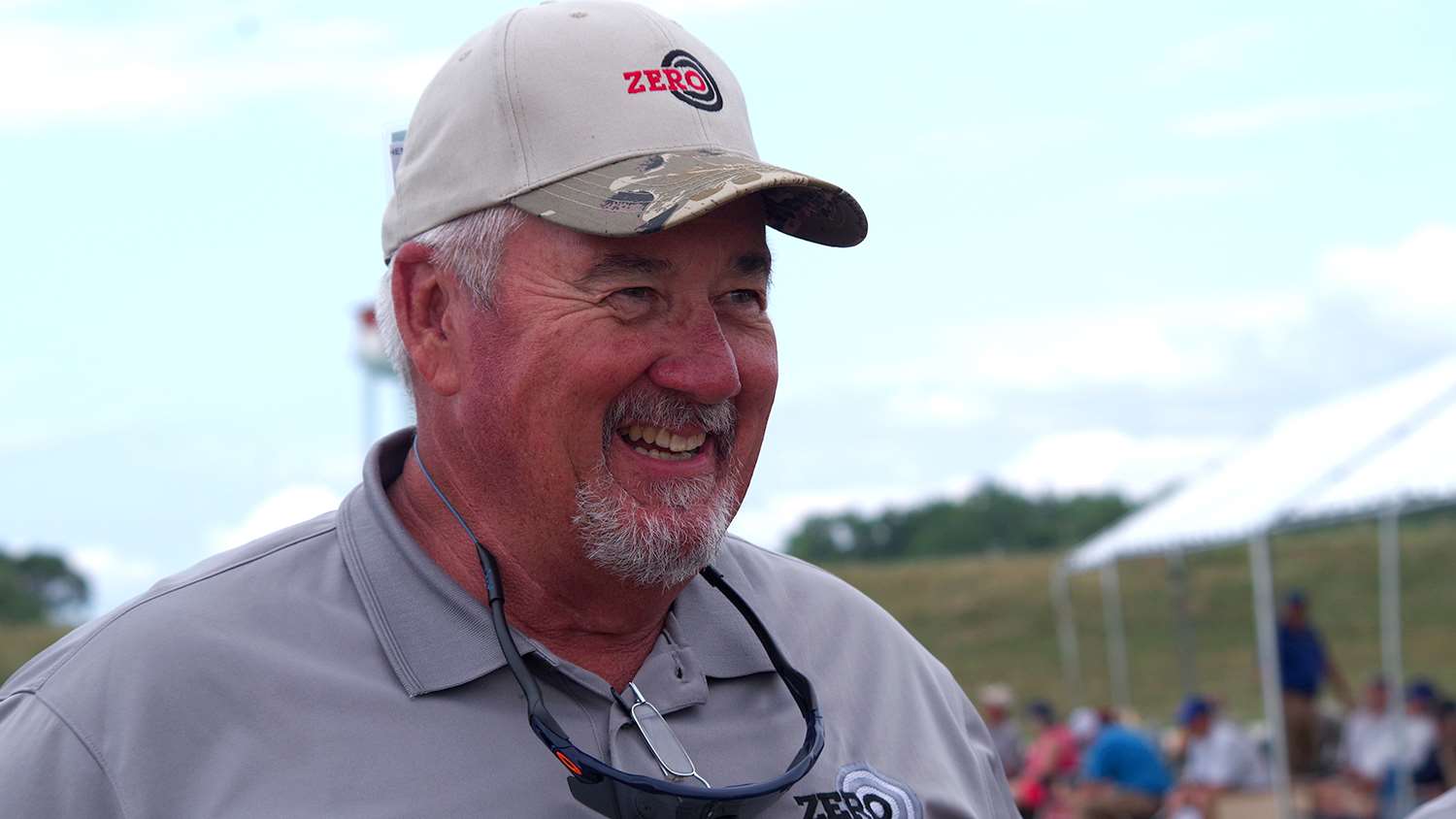
“I don’t consider myself a national champion even though I’ve won,” he said. “Bill Blankenship [has] won it six times [when the championship was conducted as part of the National Matches at Camp Perry]. For me to feel like I have really done something special, I’ll need to win it at least that sixth time.”
In addition to his individual titles, Hemphill has twice been named Trooper of the Year, first in 1982 and again 1996. Update: Hemphill won the NRA National Precision Pistol Championship in 2011 and 2016.
John W. Hession
A legend after scoring 57 consecutive bullseyes in the 800-yard Second Brigade Match of 1909, John Hession quickly ascended the ranks of world-talented rifle shooters. Picked for the 1912 Pan-American Team to compete in the International Rifle Matches in Argentina, Hession was revered for his long range skills. Matched with the talents of his teammates, the American proceeded to thrash the competition, beating the favored Argentine team by more than 200 points despite the adverse conditions (to the American team) of unfamiliar rules and targets. In total, Hession would fire on 10 U.S. International Teams during his nearly quarter century of competition.
A life member of the NRA, Hession’s appearances on so many international teams were highlighted by many other accomplishments. After pulling his own so strongly at the 1912 Pan-American Games, Hession would shoot in the 1913 NRA National Matches and tie the existing record to win the Marine Corps Cup Match. One of his biggest accomplishments was winning the Wimbledon Cup, battling a flood-induced mosquito hatch and heavy fog at the 1919 National Matches at Caldwell, NJ. Hession was also a four-time winner of the 1,000-yd. class at the Metropolitan Championships, and his steady hold in high power would translate into a spectacular win of the 1926 Palma Smallbore Championship where, in the process, he set four records.
Margaret Murdock
Margaret Murdock forged a trail of glory that few shooters would be able to follow. At a time when free rifle was a male-dominated sport, she set nine world records and won 21 gold, six silver and two bronze medals from 1966 to 1976.
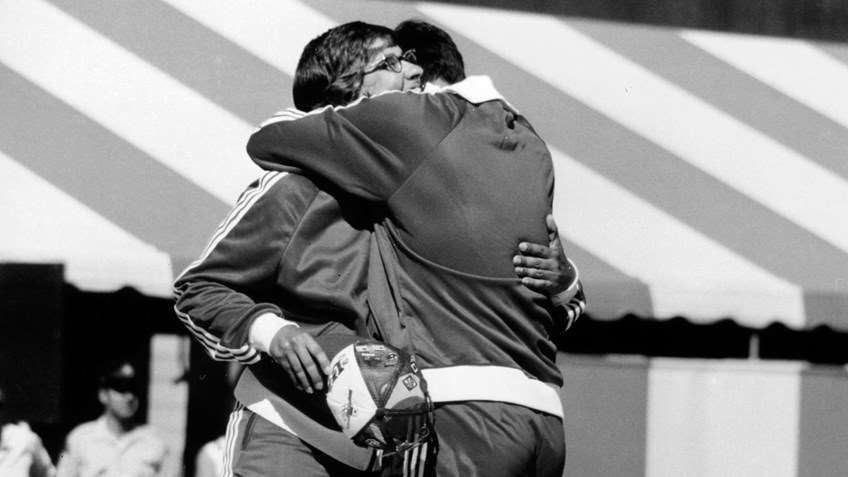
At the 40th World Shooting Championships in 1970, she flipped the shooting world on its ear by winning the Free Rifle Championship. Murdock beat 45 men to win the title and became the first woman to win a world shooting championship. A former member of the U.S. Army Marksmanship Unit, Murdock also became the first woman to earn a berth on a U.S. Olympic Shooting Team.
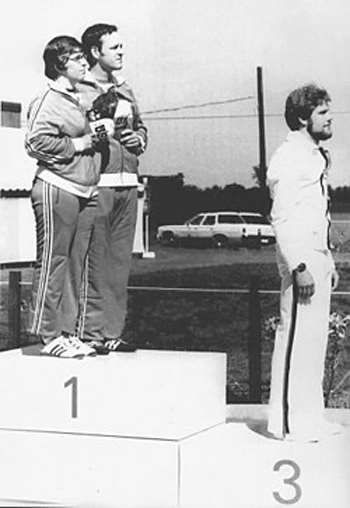
At the 1976 Montreal Olympic Games, Murdock continued to send shock waves through the ranks of male shooters. A preliminary posting of the scores in free rifle had Murdock with a score of 1162, beating Lanny Bassham by a single point. But, a review of the targets showed that Bassham had actually finished with the same score as Murdock. By UOT rules, Bassham won as his last 10 shots were scored higher than Murdock’s. In honor of her achievements, Bassham had Murdock stand alongside him at the award ceremony.
Murdock’s vast accomplishments were recognized by the shooting community in 1992 when she was inducted into the U.S. International Shooting Hall of Fame. She was elected to the Women’s Sports Foundation Hall of Fame in 1988.
Connie Petracek
Connie Petracek’s shooting career could have come to an end on a ski slope in 1989. Instead, she became one of the top women pistol competitors in the country during the 1990s.
After only five months of rehabilitation following a tragic accident on the slopes, Petracek was back on the firing line where she won two silver medals and two team gold medals at the Championship of the Americas. Petracek continued to win in 1990 despite surgery and a two month battle with pneumonia, taking a bronze at World Cup USA. At home, Petracek was named the National Air Pistol Champion and earned a silver medal in sport pistol. At the 1990 U.S. Olympic Festival, she shot her way to a gold in air pistol and a silver in sport pistol.
Petracek continued to gather honors in 1991 and 1992. She doubled for gold at the U.S. Olympic Festival and earned double national championship and titles in 1991. Petracek was also a silver medalist in sport pistol, and won team gold and silver medals at the 1991 Pan Am Games.
A shaky arm and weak lungs still couldn’t stop Petracek from setting a national air pistol record and winning a spot on the 1992 U.S. Pan-Am Team. In June of the year, Petracek broke her own U.S. International Shooting Championships air pistol record by 20 points. Her victory was her third consecutive national air pistol crown.
At the USISC in 1993, Petracek again brought home silver medals in sport pistol and women’s air pistol. She continued strong in 1994, winning a silver medal in sport pistol and a bronze in air pistol at the U.S. National Championships. In international competition, she placed fourth at the UIT World Cup Finals.
Her 1995 honors included gold medals and national titles in both women’s sport pistol and air pistol at the USA National Shooting Championships. She was also named the 1995 USOC Female Shooter of the Year. Pertacek was just as strong on the international level, winning a silver medal at the Seoul World Cup. At the Pan-Am Games, she picked up two individual gold medals and two team gold medals setting individual and team records in sport pistol.
Tommy G. Pool
Tommy Pool was a top-ranked national and international rifle competitor, proficient in both smallbore, free rifle and high power disciplines. He was one of the earliest U.S. Army Marksmanship Unit (AMU) team shooters, beginning as a member in 1958. Firing under the Army’s tutelage, Pool quickly rose to the top. He pulled off his first national title just two years after joining the AMU, winning the National Indoor Sectional-National Smallbore Rifle Championship in 1960. He would notch the Smallbore Rifle Position Championship at the 1961 National Matches.
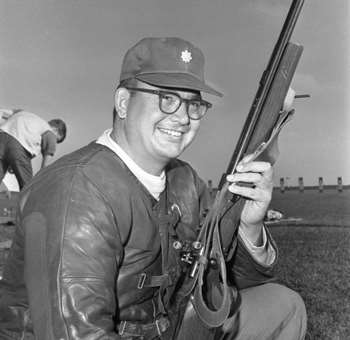
Pool successfully defended his smallbore position title for a back-to-back win in 1962, and then went straight to the international circuit. Firing at the World Shooting Championships in Cairo, Egypt, he would disappoint none, bringing home a gold in 300-meter free rifle standing, a bronze in 30-Meter 3X40, and another bronze in 50-meter free-rifle standing. Three years later he’d earn another bronze, this time for the smallbore English match at the 1964 Tokyo Olympic Games. The year 1964 also saw Pool earning the Winchester Trophy for the Smallbore Free Rifle Championship at the U.S. International Shooting Championships, a fear he repeated in 1965.
During his international career, Pool earned six gold, five silver and six bronze medals, and was a member of three, world record-setting teams. Soon after his meteoric rise through the smallbore ranks, Pool turned his attention to high power. Ascending to the rank of Lieutenant Colonel, Pool was appointed the officer in charge of the AMU’s service rifle selection. He eventually retired from the Army in 1973, but continued to shoot as a member of the Army Reserves. In 1978, 20 years after he began competing for the AMU, Pool hit the big time again by winning the DuPont Trophy for the NRA National Service Rifle Championship, as well as the Crescent Cup, the Hankins Memorial Trophy, and the Major General W. J. Sutton Trophy. Poo; repeated his Hankins and Sutton wins in 1979. Throughout his competitive years, he continued to serve the AMU and was the Unit’s Public Affairs Officer when he dies from leukemia in 1990 at the age of 55.
Det. John Pride
In 1999 Detective John H. Pride (ret.), a veteran of the Los Angeles Police Department, retained his National Individual Police Shooting Championship title for a second consecutive year, bringing his total number of victories to four in 22 years of participation in the NRA National Police Shooting Championships. Pride, now a firearms training consultant and member-mentor to the LAPD pistol team, previously won National Championships in 1992, 1994 and 1998. He has also won numerous events in revolver and semi-auto pistol as a team member of the LAPD.
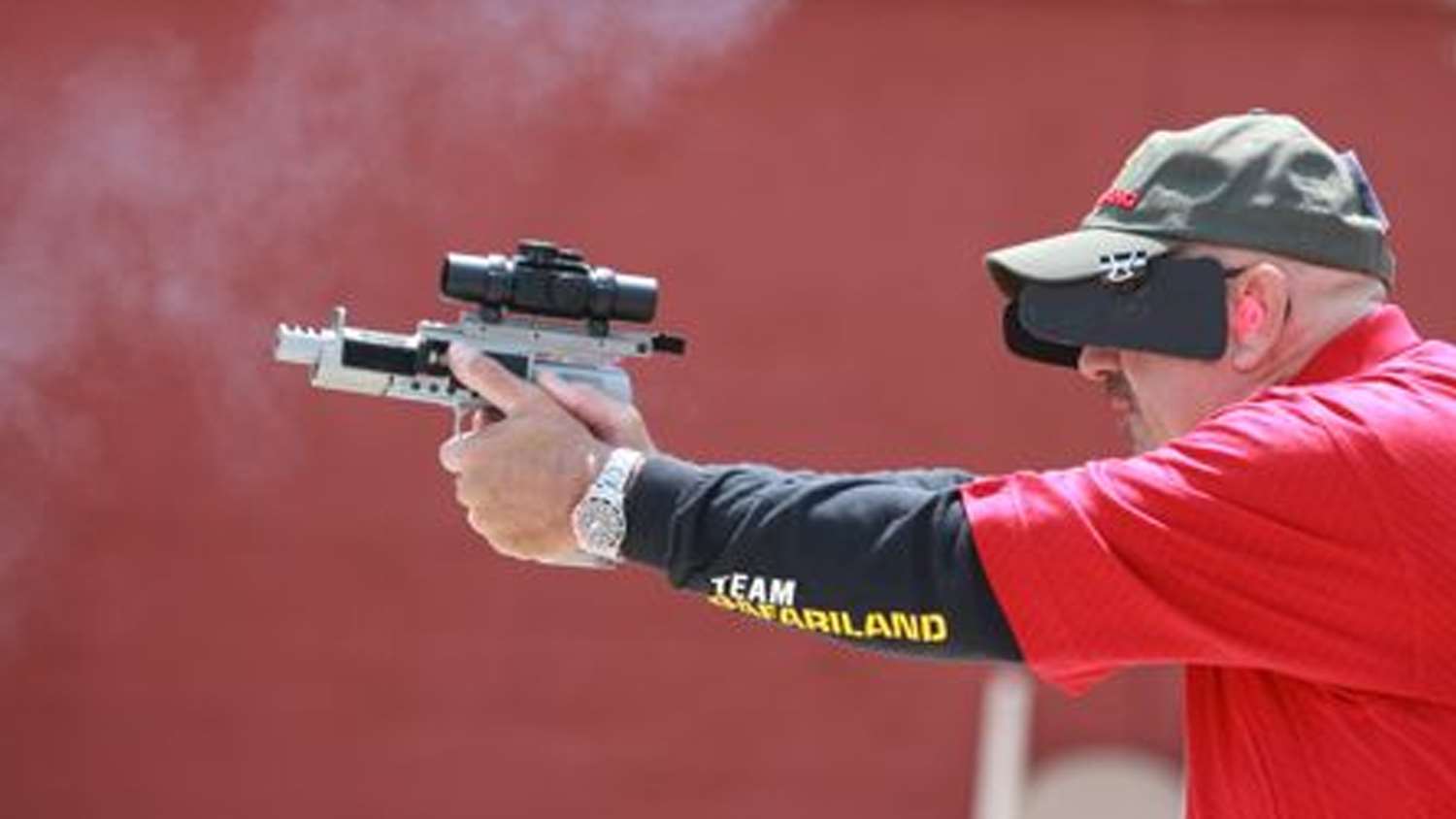
In addition to firing in police competitions, Pride has also participated in Action Pistol since the sport’s inception in 1979. He has won the Bianchi Cup four times, the first in 1987. Pride has placed in the top 20 of this event 16 times.
Pride has been shooting competitively for more than 30 years. He started officially keeping score after joining his high school’s smallbore rifle team and while shooting matches with the Army ROTC. The professional shooter especially enjoys teaching junior lawmen and practicing for competition.
William P. Schweitzer
Bill Schweitzer shot competitively and did so at internationally ranked levels for more than 40 years. He began his life on the firing line as a student at Columbia University and captain of its rifle team during the 1920s. A decade later, his reputation for marksmanship and leadership put him in the captain’s seat of the 1931 U.S. Rifle Team that reclaimed the Pershing Trophy from the British.
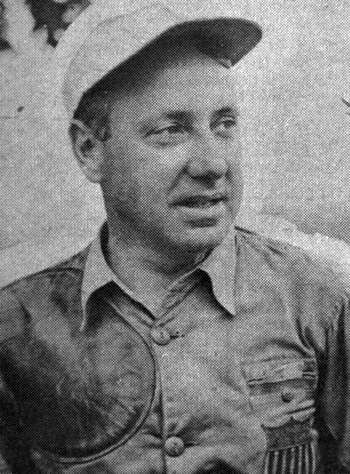
Schweitzer dominated individually on British soil for many years, winning the Bisley matches in 1939, 1953 and 1954. In between his Bisley wins, he also captained the World Champion U.S. Rile Team of 1937 and was the team’s high scorer. He was still competing both on U.S. soil and abroad, winning matches until 1968, just three years before his death at age 70. He also held several national records.
Schweitzer was an ardent NRA supporter, becoming a Life Member in 1935 and one of the first Endowment Members in 1956. He swiftly followed up on his already generous contributions to the NRA by signing on as a Benefactor in 1957, the highest NRA membership status available.
Marvin Tannahill
From a competitive view, the 1990s were very good years for Marvin Tannahill. A pistol silhouette competitor, Tanahill began his reign over the sport in 1992 when he won the long range pistol silhouette standing aggregate. He successfully defended that title until 1998. He has been the Long Range Grand Aggregate Champion from 1995 through 1999.
The Fullerton, CA, native has also been the man to beat in smallbore pistol silhouette. Tannahill won the grand aggregate in 1994 and from 1996 through 1998. In hunter’s pistol, he has been named the four-gun aggregate champion in 1995, 1997 and 1999. Tannahill has also set national and world records, and became the first competitor to shoot a perfect 80 for 80 in the long range unlimited standing aggregate.
David Tubb
David Tubb was handed his legacy of high power talents from his parents, George and Polly Tubb, both high power national champions. But, shooters can’t rest on the laurels of their predecessors. Each champion must put his own bullets in the center of his own targets. G. David Tubb has done that in spades.
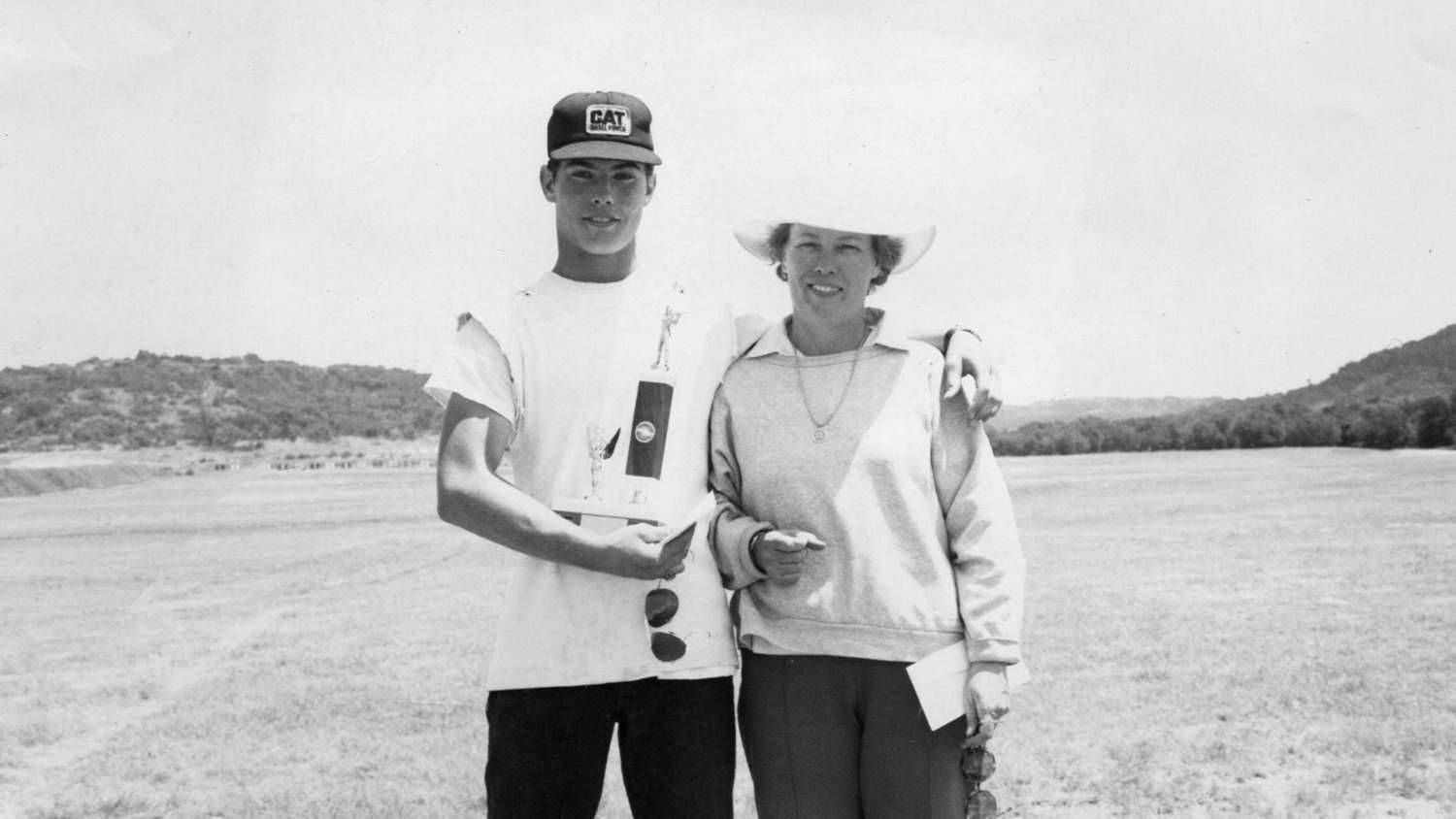
Junior titles came early to our current national champion. Tubb began winning the North American Trophy for junior merit in 1970 and won it every year consecutively through 1973. From his early beginnings, Tubb has gone on to garner nearly every major match rifle national title, most at least twice, and many several times more. Included in his long, long list of awards are multiple NRA National Match Rifle Championships, his first won in 1985.
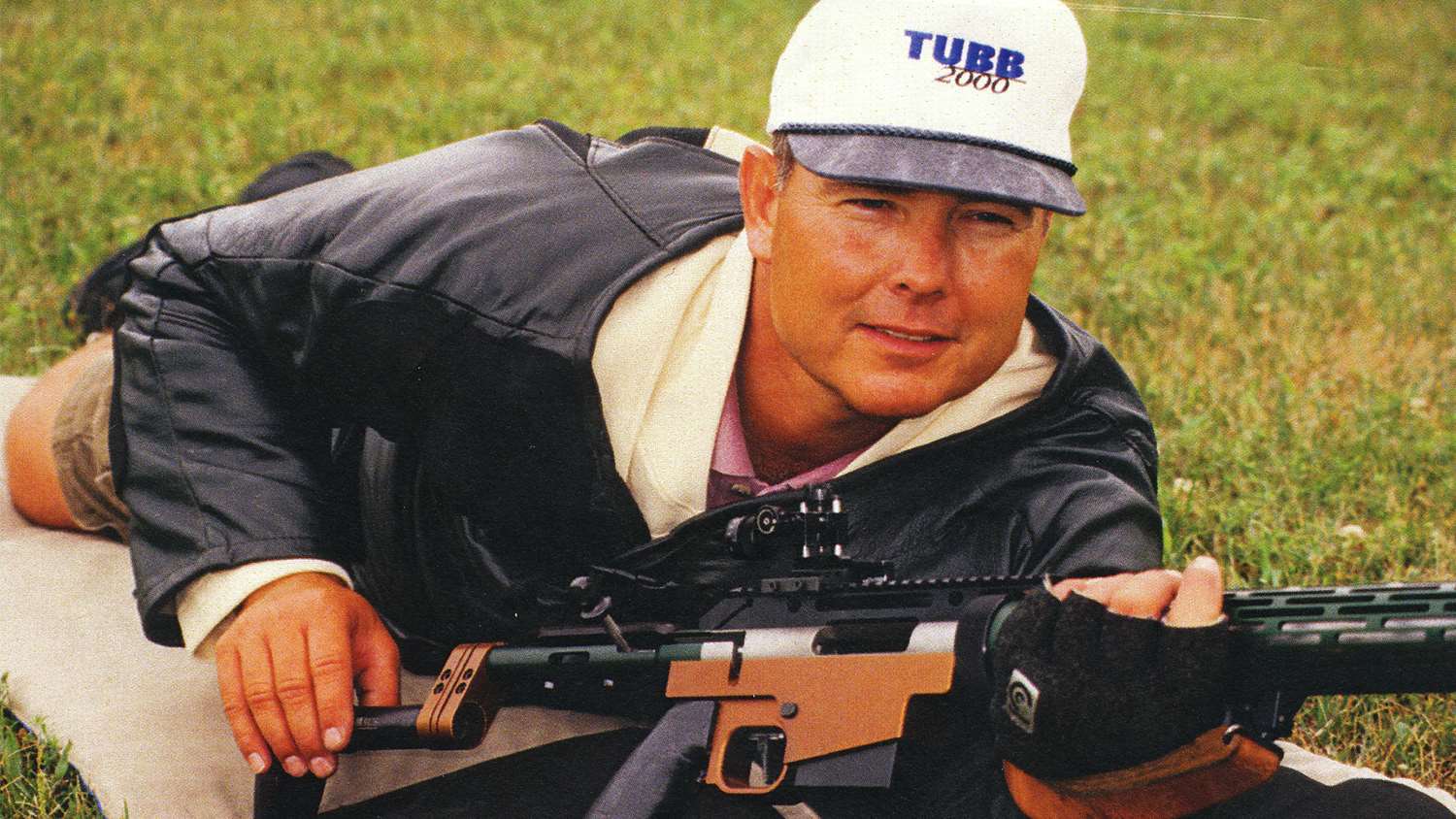
Tubb’s steady hold has proven its worth in other shooting venues as well: Tubb claimed the National Smallbore Silhouette Championship in 1988, and took the National High Power Silhouette Championship for a remarkable seven years running, from 1987 to 1993.
Tubb is passing on his legacy of high power skills to his own family as he continues to rank among the elite shooters of American high power competition. Both of his sons, Taylor and Garrett, have won the North American Trophy as high scoring junior in the National High Power Match Rifle Championships. All competitors can continue to look to G. David Tubb and his family to set the pace for many years to come.
Col. Walter R. Walsh
Equally proficient with long guns and sidearms, Walter Walsh has won championships with high power rifles, smallbore rifles, muzzleloaders, and pistols.
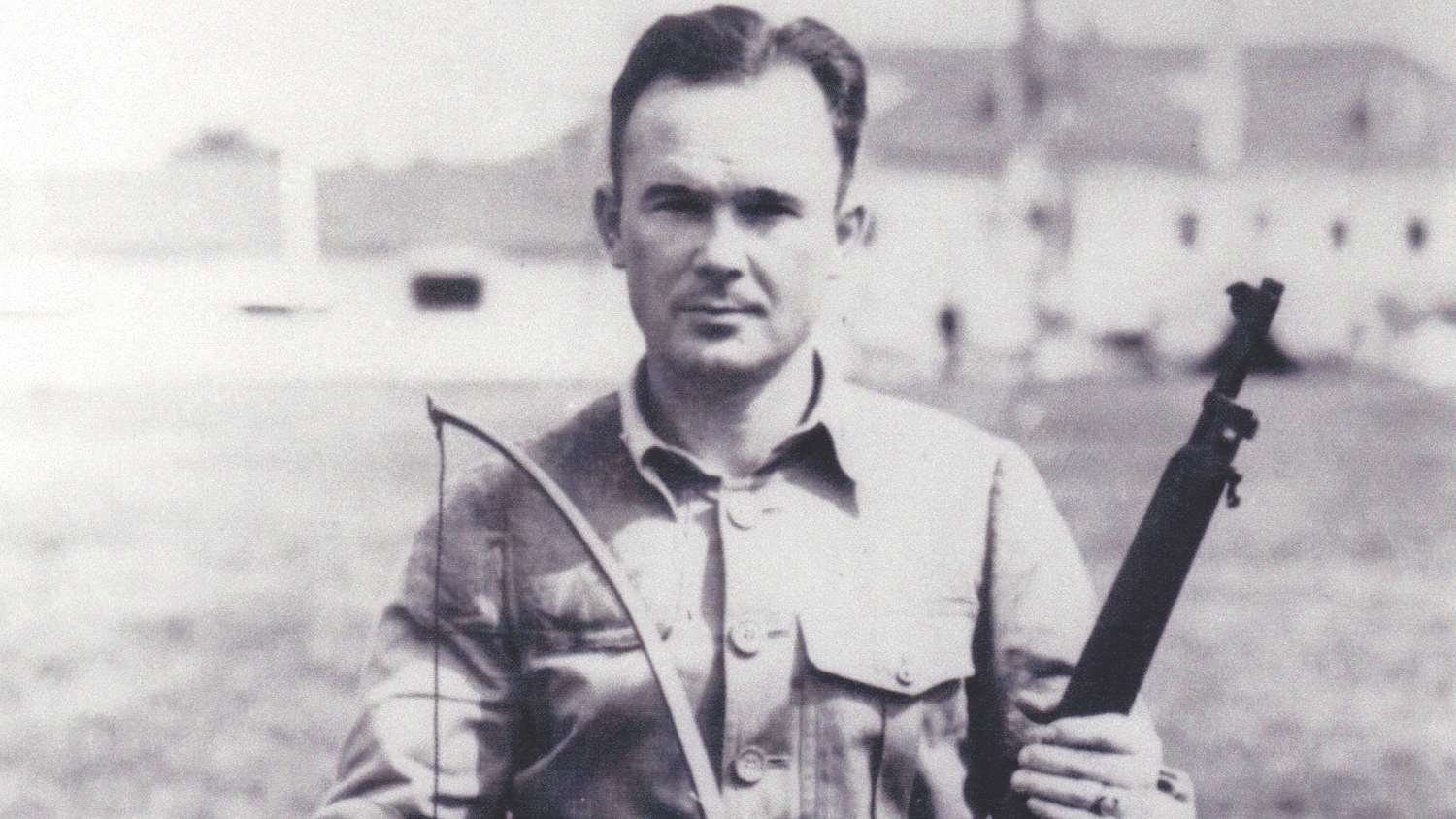
Walsh was born and raised in Union City, New Jersey. He began shooting after joining the New Jersey National Guard, and in 1928 Walsh shot his way to a place at the National Matches at Camp Perry. For the next several years, Walsh fired on the New Jersey Guard Team in the National Matches.
Walsh has won innumerable shooting honors. Among those were both the rifle and pistol championships at the 37th Annual Sea Girt Interstate Tournament in 1930. He was selected as an alternate to the Dewar Trophy Team in 1932, earning a place as a team member in 1933. That same year he won the Smallbore Wimbledon and the American Legion Smallbore Match. By 1935, Walsh had earned both Distinguished Marksman and Distinguished Pistol Shot badges.
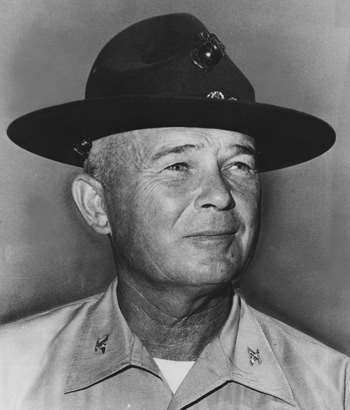
Other victories have included: the DuPont All-Around Match of 1939, an aggregate of four high power rifle matches, a smallbore rifle Dewar Course match, and a National Match pistol course; placing in the President’s 100; finishing sixth in the Wright High Power Rifle Aggregate; setting a record in the national All-Around Match; high scorer on the U.S. International Pistol Team.
In the 1940s, Walsh shot on the Marine Corps reserve team. After active duty in WWII, Walsh would win the 1946 Marine Corps Pistol Championship, and the 1949 Eastern Division Pistol Championship. Many other awards would continue to be his throughout the 1950s.
Walsh has been a member of many U.S. International Teams including those competing in the 1952 IS World Championships at Oslo, the sixth International Pistol Matches in Mexico City in 1940, the XIVth 1948 Olympiad in London, and the 36th World Championships in Caracas in 1954. He would captain the U.S. Team in the 1955 Pan American Matches in Mexico City.
Editor’s note: Sadly, Col. Walsh passed away in 2014 at the age of 106.











